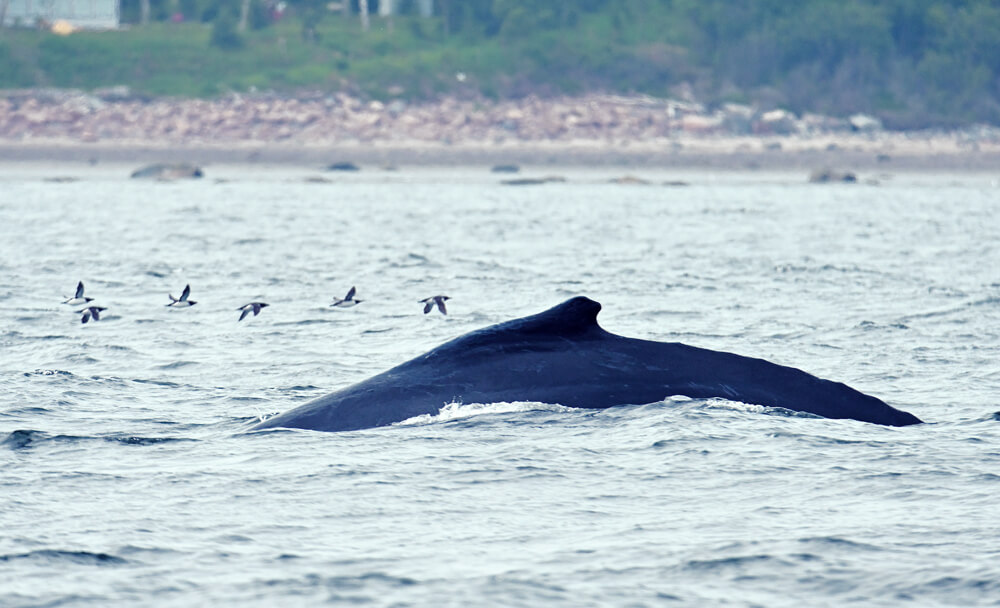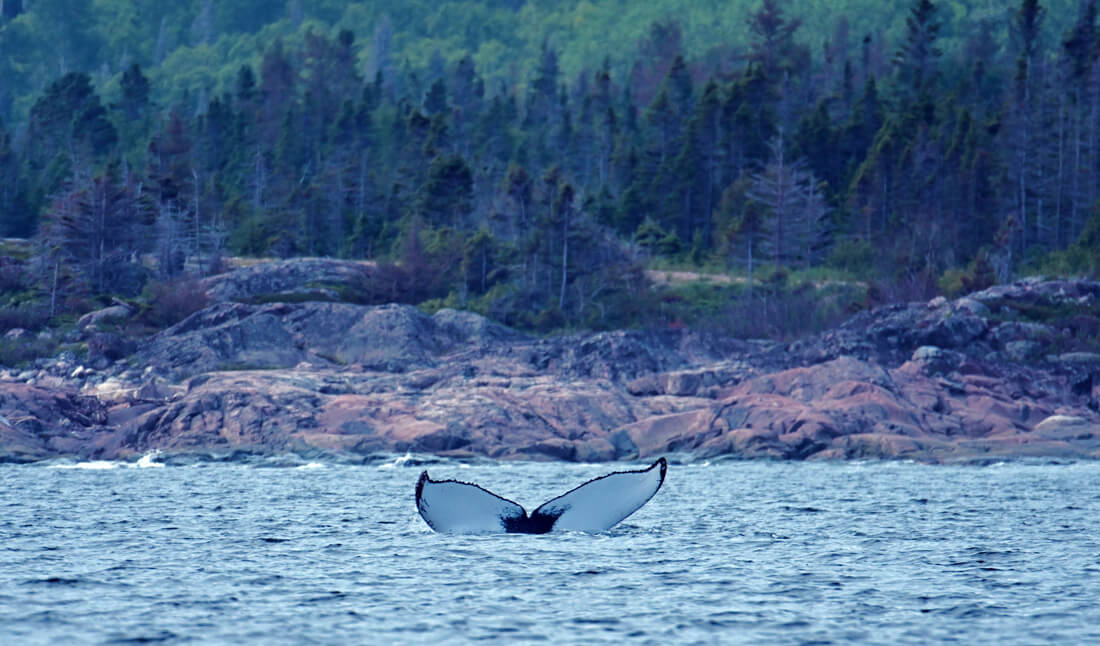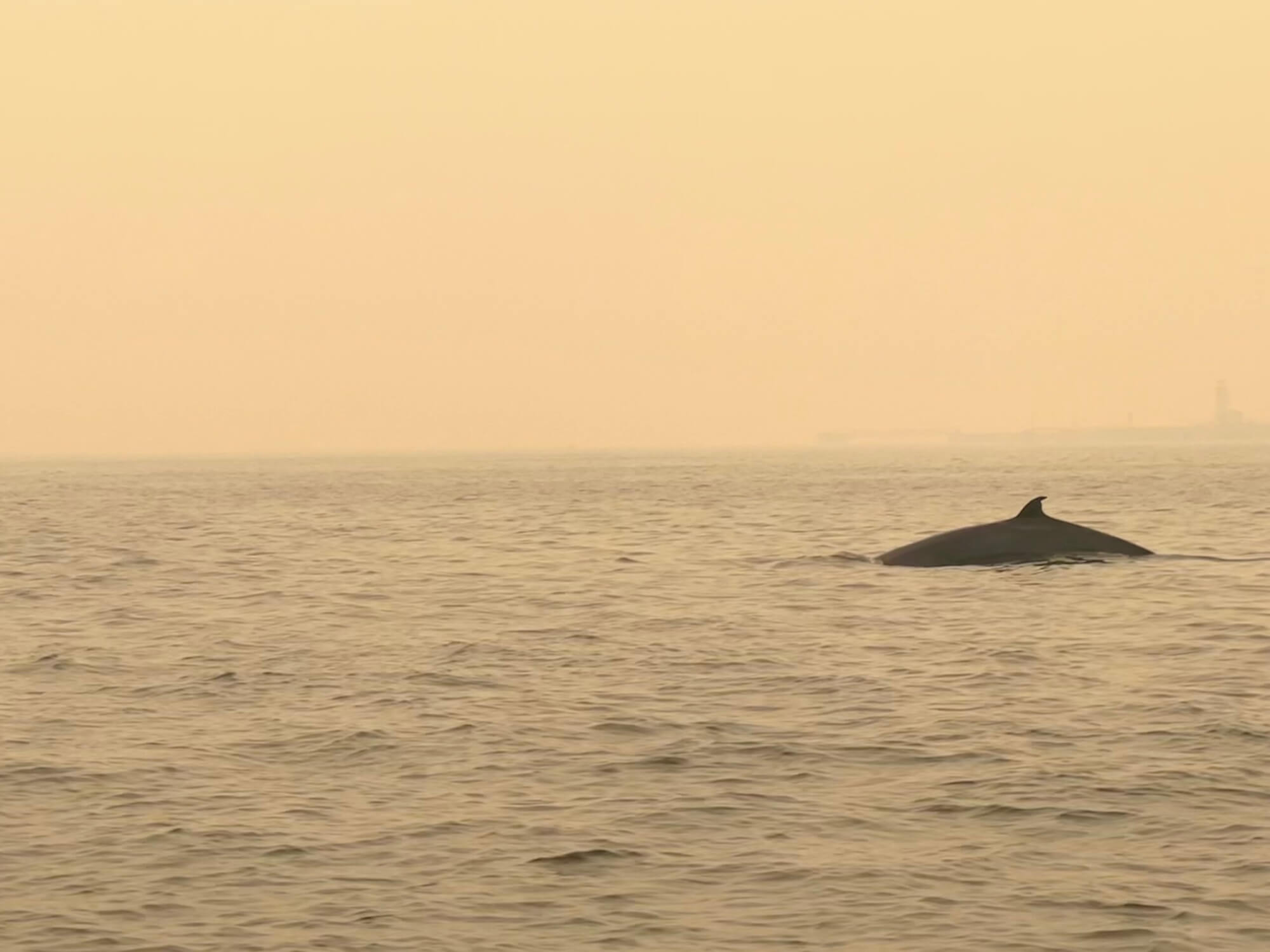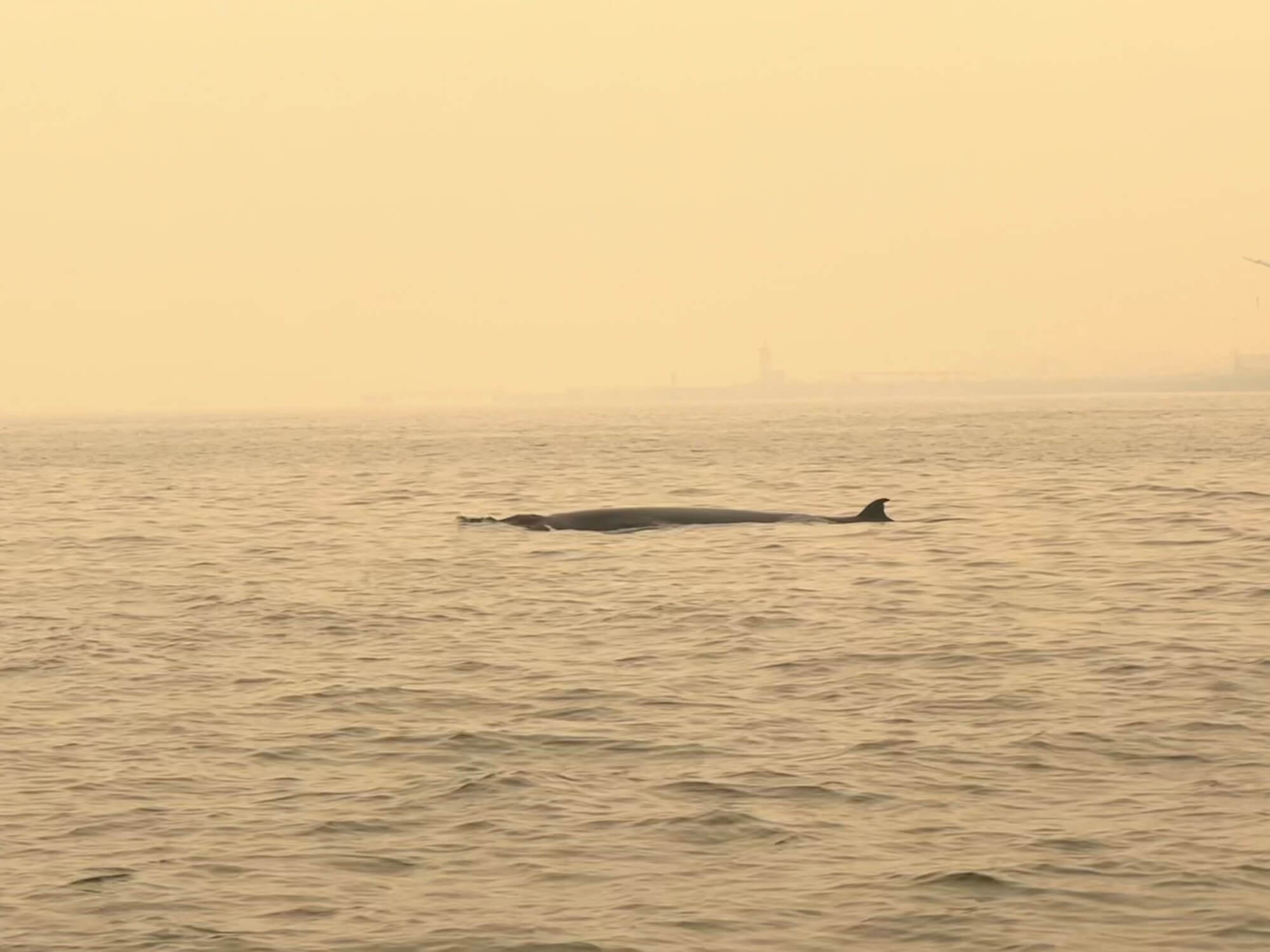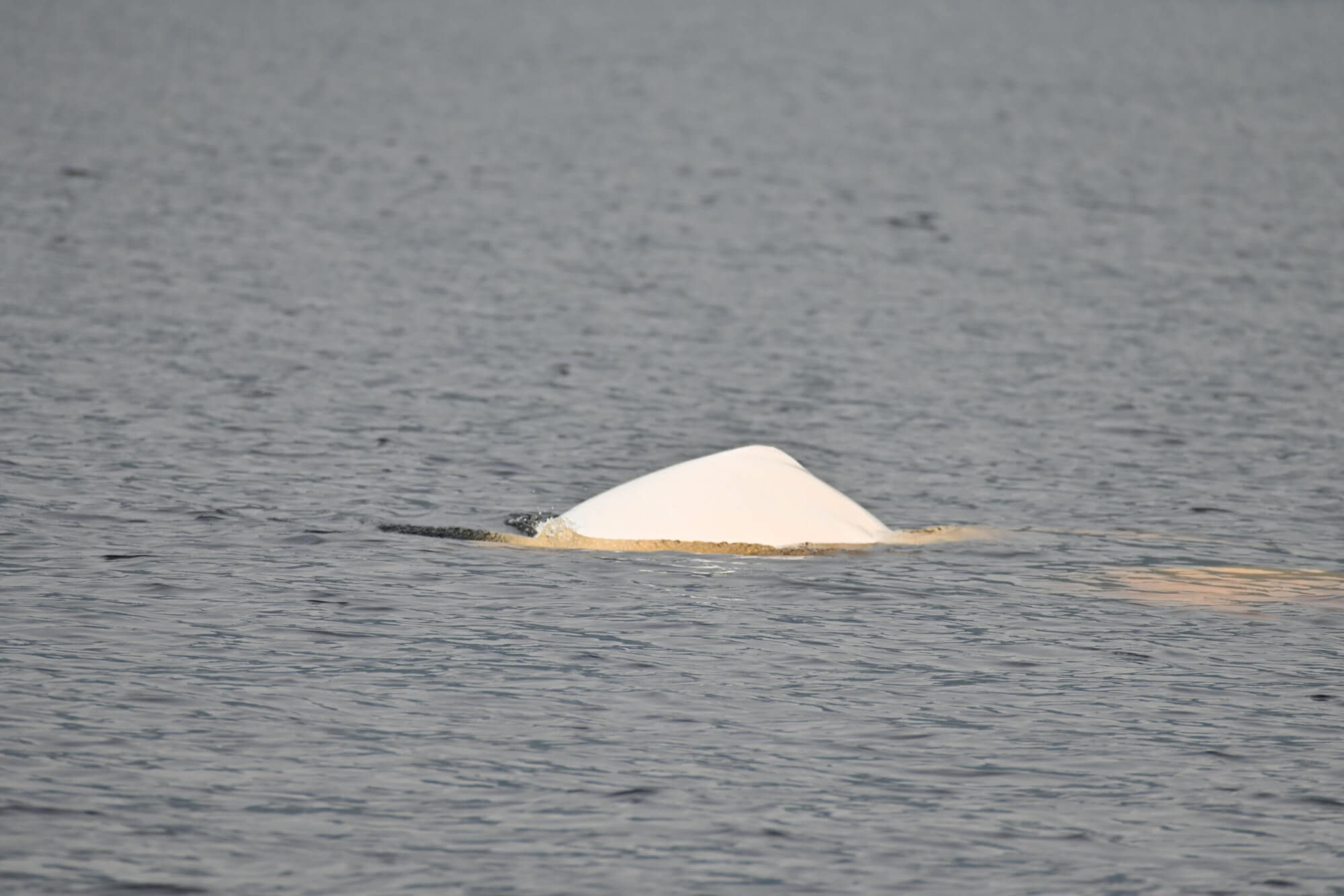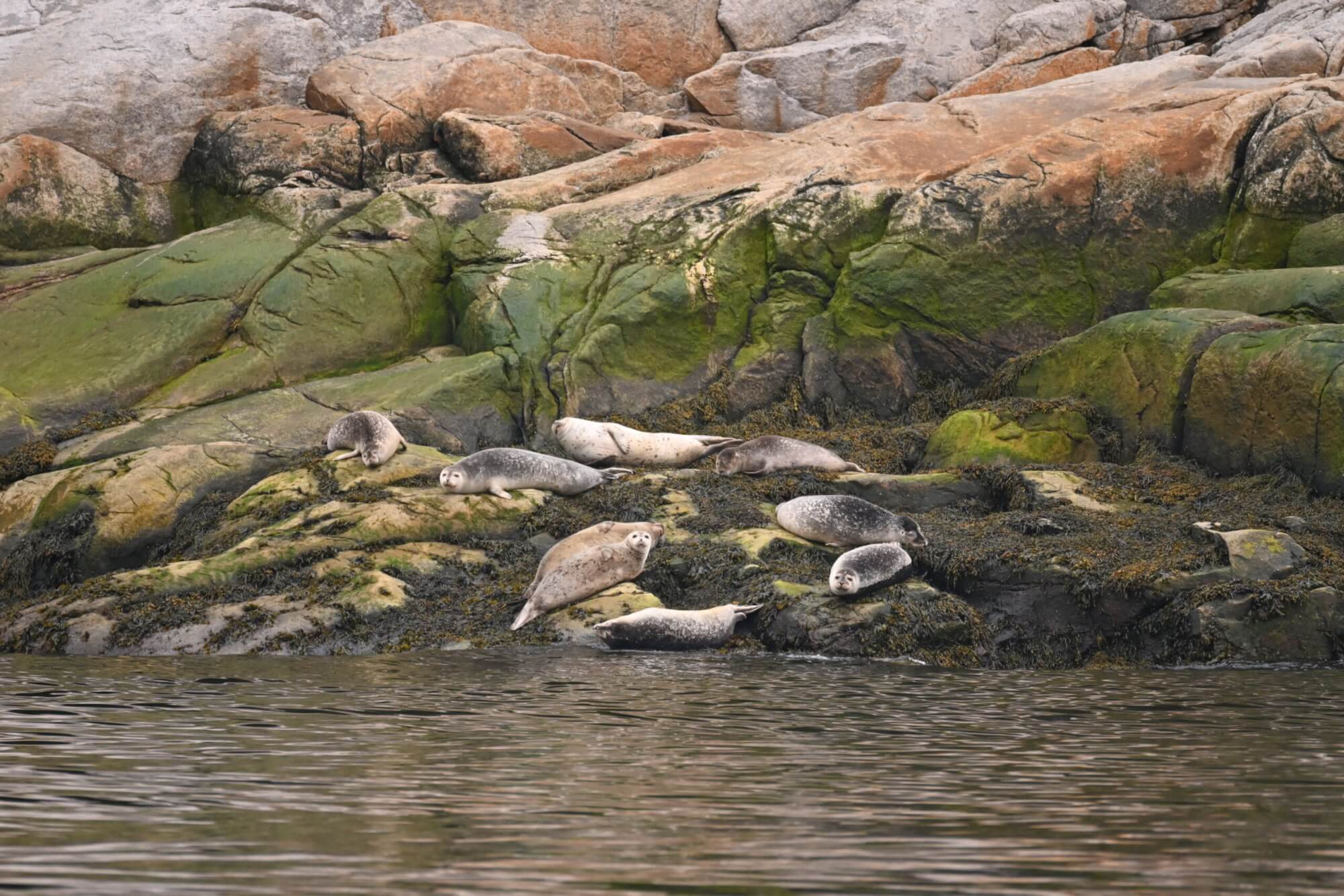In the Saguenay–St. Lawrence Marine Park as well as in the Mingan and Sept-Îles sectors, humpback and fin whale sightings are on the upswing. Research teams definitely have their work cut out for them to analyze the photos and identify all of these individuals! Elsewhere in the St. Lawrence, the smell of summer (and smoke!) is in the air with the presence of belugas, harbour porpoises, seals and minke whales.
Action on the North Shore
Déjà, H698 (Aramis), H509 (Tic Tac Toe), H930 (Guadeloupe) and H8032 (Garou) were all spotted in the Saguenay-St. Lawrence Marine Park. The whales were identified by the research team at the Group for Research and Education on Marine Mammals (GREMM). Two fin whales were also reported in the area, in addition to harbour seals and grey seals.
The Mingan Island Cetacean Study team was also treated to its share of whales. During a trip out to sea in the Mingan sector, this crew was able to observe a dozen or so humpbacks and four fin whales. A few individuals were recognized fairly quickly, including H263 (Moby), H588 (Hockey), H109 (Tracks) and H671 (Pythagoras). Several minke whales, harbour porpoises and white-sided dolphins were also spotted in the area.
Photo-identification is used to identify these individuals. This technique allows scientists to track the movements, behaviours and social organization of whales. In humpbacks, the colour pattern of the caudal fin is unique to each individual and greatly facilitates this exercise. However, some individuals, such as Garou or Aramis, do not always show their tail when they dive, meaning one must rely on their natural markings and the shape of their dorsal fin.
In Franquelin, a marine mammal enthusiast was able to spot a minke whale through the waves. A local resident reportedly saw two humpback whales, not to mention that harbour porpoises and grey seals were also observed in the area.
Exciting observations from L’Isle-aux-Coudres
A seasoned boater from L’Isle-aux-Coudres wrote to our team earlier in the week to share his sightings of several marine mammals. “From the northern shore of Isle aux Coudres, I was able to observe what appeared to me to be harbour porpoises. Possibly two or three, more or less in the middle of the river, opposite the wharf in St-Joseph-de-la-Rive, just as the tide was starting to fall and heading upriver toward Baie-St-Paul.” Indeed, his description of the animals corresponds to this species: a small, dark, fast-swimming cetacean with a visible dorsal fin and a rounded back. It was the first time he had ever seen these small cetaceans in the waters around the island. That wasn’t all, however, as there was a good diversity of marine life that day. “There was also a minke whale, which is rarer in the area, but not impossible and anyway much bigger.” Needless to say, the presence of food might have attracted all these fascinating creatures! “Judging by the how the seabirds such as cormorants and other diving ducks were behaving, together with the presence of belugas and a seal, food was most likely abundant.”
The joys of being at the water’s edge
Living near the shores of the St. Lawrence River has many advantages! Including being able to admire marine mammals at the end of one’s workday. In La Malbaie, a resident was able to see a pinniped while out shopping: “I noticed something moving on a rock in the distance. I parked the car and was able to watch this beautiful animal. It was present two days in a row, providing a little moment of magic at the end of my day.”
Up and down the coast, sightings are on the rise: belugas in Saint-Siméon, belugas, harbour porpoises and harbour seals at the mouth of the Saguenay Fjord from Pointe de L’Islet in Tadoussac and Pointe-Noire in Baie-Sainte-Catherine. At Cap de Bon-Désir in Les Bergeronnes, a humpback whale showed up, not to mention the minke whales and porpoises that also made appearances.
In Les Escoumins, a few lucky souls were able to observe a humpback whale in all its splendour as it performed a full breach near the Marine Environment Discovery Centre. These acrobatics are part of the species’ usual behavioural repertoire. Although this display managed to wow the gallery, its origins are more mysterious. Play, seduction during reproduction, communication between individuals… many hypotheses exist to explain the purpose of breaches. It is also possible that whales adopt this behaviour to rid themselves of the parasites covering their skin or to improve their diving capability.
Elsewhere in the St. Lawrence
Our dedicated observers reported the presence of seals in Sainte-Anne-des-Monts, Matane, Métis-sur-Mer and Grande-Vallée. Minke whales and humpbacks are still present in the Gaspé Bay sector. Two minke whales were also seen from the shores of Chaleur Bay. A most interesting observation of pilot whales was also shared with our team from mariners in the Gulf of St. Lawrence!
Where are the whales this week? Observations map
These infomations were reported by our network of observers. They give an idea of the presence of whales and in no way represent the actual distribution of whales in the St. Lawrence river. Simply use it for fun!
Click on the whale or seal icons to discover the species, the number of individuals, additional information or photos of the sighting. To enlarge the map, click on the icon in the top right-hand corner. The map works well on Chrome and Firefox, but not so well on Safari.
To display the list of sightings, click on the icon in the top left-hand corner.


